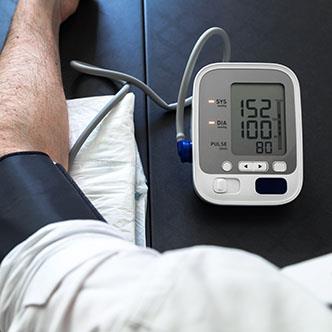
U.S. deaths related to high blood pressure (hypertension) have skyrocketed since the mid-2000s, according to research published online in the
Journal of the American College of Cardiology and presented during ACC's Annual Scientific Session World Congress of Cardiology. Annual deaths linked to high blood pressure rose by 72% in rural areas and 20% in urban areas across all age groups and backgrounds.
The concern? High blood pressure—sometimes called the “silent killer”—has no obvious symptoms, so many people don’t know they have it. But it is a leading risk factor for heart disease. Over time, high blood pressure can damage arteries and restrict blood flow, which in turn can weaken the heart muscle, or lead to a heart attack or stroke.
“This is a public health emergency that has not been fully recognized,” said Lakshmi Nambiar, MD, the study’s lead author. In addition, the findings are a call to action for high blood pressure to be caught early and managed aggressively, she said.
For many, that means 1) more frequent blood pressure screenings at their doctor’s office, in the community, and at home, and 2) stepping up efforts to adopt healthy habits, such as eating heart-healthy foods, getting exercise most days, keeping extra weight off, and not smoking.
The research is based on over 10 million death records extracted from the Centers for Disease Control and Prevention database. Researchers included all individuals whose death certificates listed cardiovascular disease as a cause of death and high blood pressure as a contributing factor. They analyzed trends in hypertension-related deaths over time in various age groups and geographic regions. The study reveals a dramatic uptick in hypertension-related deaths nationwide between 2007 and 2017.
After adjusting for age, the results revealed a spike in deaths related to high blood pressure across all categories. The increase was most pronounced in the rural South, where individuals showed a 2.5-fold higher hypertension-related death rate compared with other regions. Age-adjusted death rates increased in the rural South from 23.9 deaths per 100,000 people in 2007 to 39.5 deaths per 100,000 people in 2017.
A combination of poor diet, a high prevalence of obesity and diabetes and a lack of access to health care could contribute to the regional differences, Nambiar said. She added that targeted public health measures addressing some of those factors could help close the gap.
Interestingly, the findings contrast with other studies that have pointed to a recent decline in death rates from coronary heart disease, which is caused by hardened or narrowed arteries and is the most common form of heart disease. The reduction in coronary heart disease deaths has been attributed to improvements in treatment approaches, especially the widespread use of statins to control cholesterol, Nambiar said.
“We didn’t expect to see such a dramatic increase,” she said. “Since hypertension is a leading risk factor for coronary heart disease—for which death rates have improved—I thought we’d see an improvement in hypertension in conjunction with that overall trend. But we’re just seeing it get worse and worse.”
Since the rise in deaths related to high blood pressure does not align with trends in coronary heart disease deaths, Nambiar said the data may point to more cases of heart failure, a form of heart disease in which the heart becomes too weak to pump enough blood through the body.
Although more research is needed, the findings underscore the importance of taking high blood pressure seriously.
More Information
Blood pressure is a measure of how hard your blood pushes against your arteries as it moves through your body. High blood pressure is a reading of 130 mm Hg or above for systolic pressure (the top number) or 80 mm Hg or above for diastolic pressure (the bottom number).
To learn more about high blood pressure and how to manage it, go to
CardioSmart.org/HighBP.
Read the original article: "Decade Long Temporal Trends in U.S. Hypertension Related Cardiovascular Mortality," JACC, March 2020.